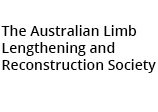MPFL Reonstruction
The Medial Patellofemoral Ligament (MPFL) is part of the complex network of soft tissues that stabilize the kneecap (or patella) to the long bone of the thigh, also called the femur. Injury to this ligament can occur when the patella dislocates or subluxes due to trauma experienced during athletics or an accident, as a result of naturally loose ligaments-most frequently seen in girls and women-or due to individual variations in bony anatomy. People with these injuries are described as having recurrent patellar instability.
The MPFL plays a particularly important role in keeping the patella on track and acting as a sort of leash that restrains movement of the patella.
When patellar dislocation occurs, soft tissues are damaged as the patella "jumps" the track and then comes forcibly back into place. Because the bone essentially always dislocates toward the outside part of the leg, the ligament on the inside of the knee-the MPFL-is torn.
Left untreated, an injured MPFL can heal. However, it does so in a looser, lengthened position, setting the stage for subsequent dislocations and more damage to the cartilage in the knee. While pain, swelling, and disability from dislocation are significant in themselves, the greater concern with dislocation is injury to the cartilage that covers the ends of the bones where they meet in the joint. Once cartilage damage occurs, the patient is at high risk of developing patellofemoral arthritis, a significantly more difficult condition to treat. For this reason, it's never advisable to allow dislocations to continue occurring.
Although non-operative treatment does not have a significant role in the treatment of patellar instability, if the patient has experienced a single dislocation without a cartilage injury on MRI he or she will be treated with short term immobilization and physical therapy. Almost all candidates for MPFL reconstruction have dislocated their knee more than once, and in some cases may have experienced multiple dislocations. (MPFL may be performed in a patient who has had single dislocation, but only in the presence of other problems in the knee that also require surgical intervention.)
During the MPFL Reconstruction procedure, Dr Astori replaces the injured ligament with a tendon, taken from the patient�s hamstring or donor tissue, and creates a new ligament. Arthroscopy is used to visualize the area, and the reconstruction is completed through two small incisions. The entire surgery takes about an hour and patients return home the following day, with their knee stabilized in a brace and using crutches for a short period of time.
MPFL reconstruction produces excellent results and is associated with a very low rate of complications, which includes rare fractures, infections or blood clots. It is also possible to re rupture the new ligament if there is a very forceful injury or the patient returns to sport too early. Moreover, the procedure can be performed safely in children with open growth plates, the area where bone grows, whereas, surgical approaches that change bone alignment are not appropriate in young patients. With no alternative available, in the past, children were sometimes placed in a brace, but remained at risk for additional dislocations until reaching skeletal maturity, when surgical reshaping of the bone (osteotomy) might be considered.





















